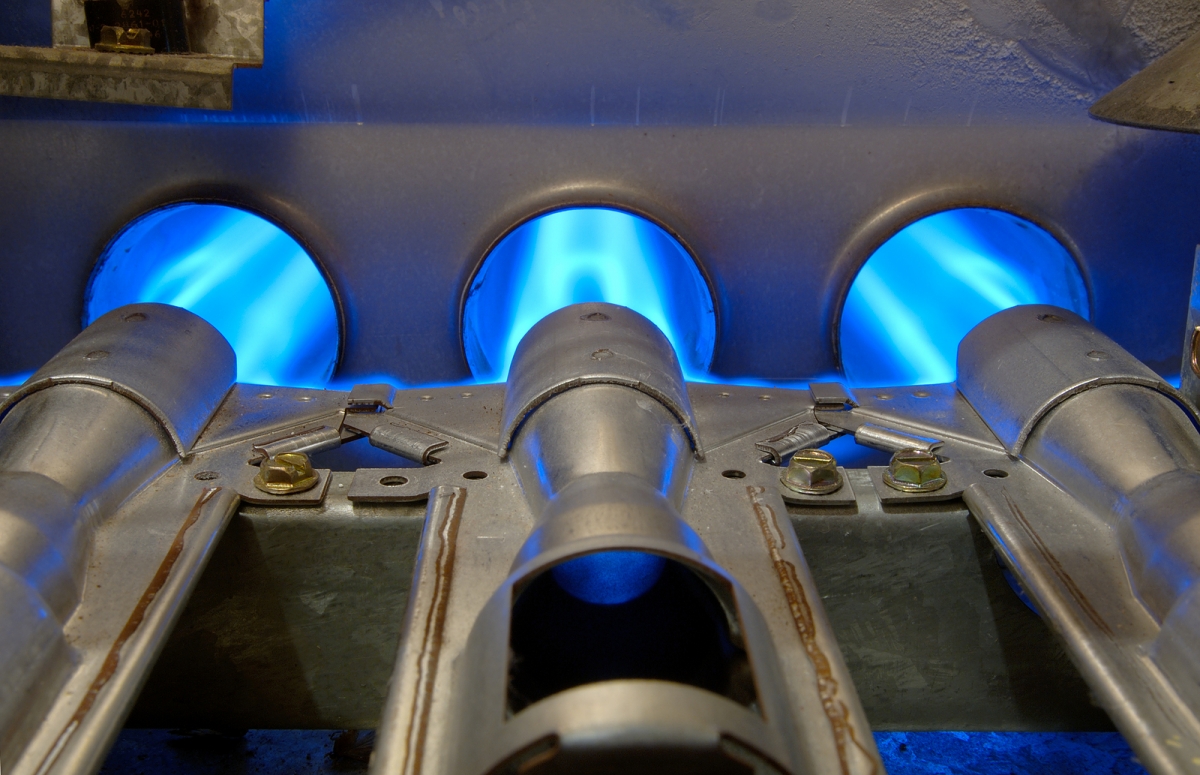
Top 7 Sustainability and Green Technology Innovations
In 2023, the world saw a record high in carbon dioxide emissions. This shows we urgently need new solutions for our environmental problems. Luckily, we’re seeing a big jump in the use of advanced sustainability and green technology. These solutions could change how we use energy, build, manage waste, and feed our communities.
There’s been a big leap in solar panel technology and energy-efficient grids. Green hydrogen production is also showing promise. We’re on the edge of a green technology revolution. This article will look at the top 7 innovations in sustainability and green technology that are making our future greener.
Dealing with climate change and saving the environment is complex. It’s important to see how these new technologies can help us move forward. By using renewable energy, managing energy better, and changing how we use resources, we can aim for a greener, sustainable tomorrow together.
Introduction to Sustainability and Green Technology
Sustainable practices and green technology are key to solving big environmental problems. They help cut down on carbon emissions, save natural resources, and use renewable energy. By using these solutions, we can make our world more eco-friendly and efficient.
What Is Sustainability?
Sustainability means we can meet our needs without taking away from future generations. It’s about looking after the planet’s health now and in the future. It covers the environment, economy, and social well-being, making sure our actions are good for the planet’s future.
What Is Green Technology?
Green technology, or environmental technology, clean technology, or sustainable technology, is all about making things better for the planet. It includes tech that uses less energy, recycles more, and cuts down on pollution. These technologies help industries be more sustainable, reducing their impact on the environment.
Why Innovations in Sustainability Matter
Innovations in sustainability and green tech are vital for our planet, our wallets, and our health. They help lower harmful emissions, use resources wisely, and protect nature. By investing in these solutions, we’re building a better, greener future.
More and more, people, companies, and governments are embracing sustainable practices and green tech. They see the need to tackle environmental issues head-on. With everything from renewable energy to eco-friendly building materials, these innovations are creating a greener tomorrow.
Innovation #1: Advanced Solar Panel Technology
The world is moving towards renewable energy, and solar power is leading the way. Solar panels are key to this change, with big improvements that change how we use the sun’s energy.
Overview of New Solar Panel Technologies
Solar panels have grown beyond old types like monocrystalline and polycrystalline. Now, thin-film and perovskite cells offer better efficiency and flexibility. Solutions like solar shingles, tiles, and floating panels make solar power fit more places and needs.
Benefits of Enhanced Efficiency and Flexibility
New solar panel tech has made energy conversion more efficient, with some up to 22-25% efficient. This means panels can be used in more ways, making solar power easier to use everywhere. Now, buildings can be made to generate their own clean energy.
Case Studies: Leading Companies and Projects
Companies and projects worldwide are leading in solar innovation. Tesla’s solar shingles and tiles are changing home solar energy. Big names like Apple, Google, and Microsoft are using solar in their buildings. Even floating solar panels on water, like in Utsunomiya, Japan, show how solar can be used in new ways.
As we need more renewable energy, solar panel tech is key to our future. These improvements make solar power better, more flexible, and easier to get. This makes it a great choice for people and businesses wanting to be more eco-friendly.
Innovation #2: Energy-Efficient Smart Grids
Smart grids are changing how we manage energy, bringing new technologies to improve power distribution and save energy. They help deal with the challenges of more renewable energy and more people using electricity, like for electric cars.
How Smart Grids Improve Energy Management
Smart grids use advanced tech to make managing and distributing energy better. Key innovations include:
- Predictive Maintenance: They use IoT sensors to check on equipment health. This lets them fix problems early, reducing downtime and making equipment last longer.
- Route Efficiency: Smart grids plan the best routes for service vehicles. This cuts down on waiting time and fuel use, making transportation and logistics better.
- Residential Solar Integration: They make it easy for homeowners to connect their solar panels to the grid. This lets people send extra energy back and help with the switch to clean energy.
Technologies Behind Smart Grids
Smart grids are built on advanced technologies, such as:
- Internet of Things (IoT) sensors and devices for real-time data and analysis
- Artificial Intelligence and machine learning for predicting and optimizing
- Energy storage systems to handle the ups and downs of renewable energy
- Advanced metering infrastructure (AMI) and smart meters for better energy tracking and pricing
Examples of Smart Grid Implementations
Smart grid tech is being used all over the world, showing big changes:
- Texas is leading in smart grid use, with predictive maintenance and route planning to make its power grid more reliable and efficient.
- California uses smart grids to smoothly add large amounts of solar power, helping reach a 100% clean energy goal by 2045.
- Boulder, Colorado, has a full smart grid system. It includes real-time energy tracking, dynamic pricing, and energy storage to keep the grid stable and cut emissions.
Innovation #3: Green Hydrogen Production
The world is moving towards a sustainable energy future, and green hydrogen is leading the way. It’s made from renewable energy, not fossil fuels. This makes it a clean and green choice.
What Is Green Hydrogen?
Green hydrogen comes from breaking down water with renewable power from sources like solar or wind. This method cuts out the carbon emissions of old ways of making hydrogen. It’s key for reducing global carbon emissions.
Methods of Production and Storage
- Electrolyzer technology has gotten better, making green hydrogen cheaper and more efficient.
- New sensors help keep an eye on and improve the hydrogen-making process. They make it safer and more reliable.
- New ways to store hydrogen, like compressed or liquefied, are being developed. These help solve the problem of moving and storing this clean fuel.
Potential Applications and Future Outlook
Green hydrogen has many uses, from cars to industrial processes. Fuel cell technology lets us use it in cars without any emissions. It’s also part of the mix for a sustainable energy future.
As the cost of green hydrogen goes down, more people will use it. Big names in industry and government are investing in electrolyzer technology and fuel cell technology. They want to make this clean energy solution more common.
The future of green hydrogen is promising. It could be a big part of moving to a sustainable, low-carbon world. As it gets cheaper and better, green hydrogen could change the game in fighting climate change.
Innovation #4: Sustainable Building Materials
The building industry is working hard to lessen its environmental impact. Using sustainable building materials is key to this effort. These materials help in making buildings that are better for the planet. They cut down on carbon emissions, waste, and improve energy use.
Overview of Eco-Friendly Building Materials
Eco-friendly building materials include recycled and renewable resources, and new bio-based composites. They have a lower environmental impact than traditional materials. Here are some examples:
- Bamboo – a fast-growing and renewable resource suitable for various construction applications
- Recycled metals like steel and aluminum, which can reduce waste in construction projects
- Straw bales that provide excellent insulation and energy efficiency in eco-friendly buildings
- Rammed earth structures with low environmental impact and excellent thermal mass
- Insulated Concrete Forms (ICFs) offering energy-efficient solutions for construction
- Hempcrete, a lightweight and durable bio-composite material with excellent thermal insulation
Benefits of Using Sustainable Materials
Using sustainable building materials has many benefits. It helps reduce a building’s carbon footprint and improves energy efficiency. It also makes the air inside buildings healthier. Plus, these materials often need less upkeep and last longer, saving money over time.
Notable Projects and Their Impact
Architects, engineers, and developers around the world are using sustainable materials in their projects. This shows how green architecture can make a difference. The Bullitt Center in Seattle uses cross-laminated timber and other sustainable materials for net-zero energy performance.
The Omega Center for Sustainable Living in New York uses recycled steel, bamboo, and straw bales. These projects prove that eco-friendly construction is possible and effective.
The building industry is working to reduce carbon emissions and tackle environmental challenges. Using sustainable building materials is key to a greener future for our buildings.
Innovation #5: Circular Economy and Waste-to-Value
As we face the challenge of waste management, new solutions are coming to light. The circular economy and waste-to-value tech are leading this change. They’re changing how we use resources and affect the environment.
Understanding the Circular Economy Model
The circular economy is a new way to think about using resources. It aims to keep resources in use longer, get the most value from them, and then recycle or regenerate them. This approach helps us reduce waste, save resources, and meet environmental goals.
Technologies Turning Waste into Valuable Resources
New tech is making it possible to turn waste into valuable things. For example, some tech can change plastic waste into energy, while others help cut down food waste in kitchens. Companies like PowerHouse Energy, HP, and Winnow are at the forefront, showing how sustainable practices can save money and protect the planet.
Success Stories in Waste-to-Value Technologies
More and more, companies are moving towards a circular economy. Stella McCartney, Impossible Foods, and Nissan Leaf are just a few that are using waste-to-value tech to innovate and reduce their environmental impact. These efforts show the big potential of the circular economy to create value, stay competitive, and help the planet.
| Company | Waste-to-Value Innovation | Environmental Impact |
|---|---|---|
| PowerHouse Energy | Waste-to-Energy Hydro System | Converts unrecyclable plastic waste into hydropower |
| HP | Elite Dragonfly Laptop | Made from 82% recyclable materials, including ocean-bound plastic |
| Stella McCartney x Adidas | Sustainable Sports Clothing and Shoes | Manufactured using 70% recycled materials |
| Winnow | AI-Enabled Food Waste Reduction | Helped clients reduce food waste in commercial kitchens |
| Impossible Foods | Lab-Grown Meat Alternatives | Combats greenhouse gas emissions associated with traditional meat production |
| Nissan Leaf | Sustainable Vehicle Manufacturing | Uses 25% recycled materials in vehicle production |
As we adopt the circular economy and waste-to-value tech, we’re seeing big changes. These innovations offer new ways to save resources, cut emissions, and create value. They’re helping us move towards a greener, stronger economy for the future.
Innovation #6: Vertical Farming and Urban Agriculture
The world’s population is growing fast, making it vital to find ways to produce food sustainably. Vertical farming is a new way to grow food that could help solve this problem.
What Is Vertical Farming?
Vertical farming grows crops in stacked layers, often indoors. This method lets us produce food in cities without needing a lot of land. It uses hydroponics, growing plants in water and nutrients, making it possible even in small spaces like apartments.
Advantages for Urban Agriculture
- Improved yields: Vertical farming can produce up to 350 times more per acre than traditional farming.
- Reduced environmental impact: These farms use up to 95% less water and don’t need harmful pesticides, making them sustainable.
- Year-round crop cultivation: With controlled environments, crops can be grown all year, solving seasonal problems and improving food security.
- Localized food production: Farms near cities cut down on transportation costs and emissions, supporting a greener food system.
Examples of Successful Vertical Farms
Walmart teamed up with San Francisco’s Plenty to bring advanced vertical farming to their supply chain. Plenty’s farm in Compton, California, can produce 4.5 million pounds of greens a year in just one city block. This shows how effective this method can be.
Singapore is also focusing on urban agriculture. They plan to have 200 hectares of high-rise greenery by 2050. This shows their commitment to using vertical farming and sustainable practices in the city.
Thanks to tech, automation, and better crops, vertical farming is set to be a big part of solving food and sustainability issues in cities around the world.
Innovation #7: Electric and Autonomous Vehicles
The world is working hard to make the future greener. The move to electric and self-driving cars is key in this effort. These changes aim to cut down on harmful emissions from transportation.
The Rise of Electric Vehicles
Electric vehicles, like all-electric, hybrid electric, and plug-in hybrids, are leading the way in green transport. They use electricity instead of gasoline, which means less pollution. Thanks to better batteries and charging stations, more people can now use electric cars easily.
Benefits of Autonomous Driving Technologies
Self-driving cars bring more good news for the planet. They drive better, using less energy and making fewer emissions. With their smart tech, these cars can avoid unnecessary stops and go smoother, saving energy and cutting down on pollution.
Impact on Sustainability and Transportation
As electric and self-driving cars spread, they’re changing the transport world. They cut down on harmful emissions and make driving more efficient. This means we’re moving towards a cleaner, greener future for getting around.
| Comparison | Conventional Vehicles | Electric Vehicles |
|---|---|---|
| Emissions | High tailpipe emissions | Zero to low tailpipe emissions |
| Energy Efficiency | Lower energy efficiency | Higher energy efficiency |
| Fuel Cost | Higher fuel costs | Lower fuel costs (electricity) |
| Maintenance | Higher maintenance costs | Lower maintenance costs |
Conclusion
The top 7 sustainability and green technology innovations discussed here offer big hopes for our planet’s future. They include advanced solar panels, smart grids, green hydrogen, sustainable building materials, and more. These innovations are key to a greener future.
Summary of Top Innovations
Climate change is a big challenge, but these green technologies can help. They improve renewable energy, make things more efficient, and cut down on pollution. By adopting these technologies, we can change industries and make the future greener.
The Future of Sustainability and Green Technology
We expect to see more tech breakthroughs and policies that push us towards a sustainable world. Technologies like AI will help us use energy better and make things more efficient. This will speed up our move to a sustainable planet.
How to Stay Informed and Get Involved
To keep up with the latest in sustainability and green tech, follow trusted news sources and industry publications. Support groups working on environmental issues. By getting involved and pushing for these innovations, we can all help make a better future.













